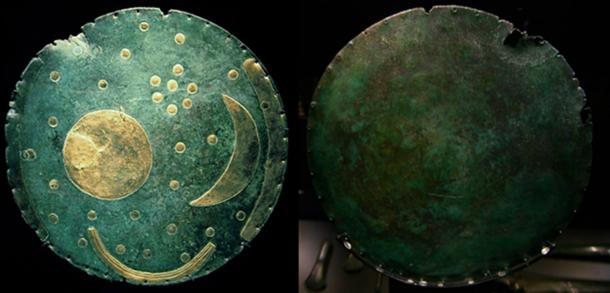Goseck Circle : The German Stonehenge & The Nebra Sky Disk

The oldest solar observatory ever discovered in the world, even older than the legendary Stonehenge.
The Land of Saxony, in eastern Germany, is an aristocratic land, rich in castles, libraries and art galleries. But the greatest of its treasures is not kept in a collection or in a museum: considered the oldest astronomical observatory in Europe, it is deeply rooted in the countryside. It is known as the Goseck Circle, from the name of the neighboring town of Burgenlandkreis. But after it opened to the public in 2005, it was also renamed the "German Stonehenge".
The complex is made up of a set of concentric trenches, dug into the ground to form a circle 75 meters in diameter. Inside, two circular palisades open up to three precisely arranged gates to observe the movements of the Sun and stars. It seems that the structure dates back to the Neolithic period: some objects found on the site date back to 5,000 BC, 2,000 years earlier than Stonehenge. However, according to official archeology, the men of this period did not have the mathematical and astronomical knowledge to make the Goseck Circle, much less to make it an observatory. It seems that the astonishing German structure wants to force us to rewrite history or to build science fiction hypotheses.
It was pilots who, while flying over Saxony, discovered the Goseck Circle in 1991, noticing that the cereals were growing there in a strange circular geometry. This site was originally composed of four concentric circles, a tumulus, a moat and two wooden palisades at the height of a person, open on three series of turned doors, one towards the south-east, the other to the southwest and the last to the north. 7,000 years ago, on the day of the winter solstice, it would have been possible for a man standing in the center of the circle to see the sun rise and set through the two gates on the southern slope. On the other hand, we do not yet know where the north gate was oriented.
Over two hundred similar sites are spread across Germany, Austria and Croatia. We weren't just observing the stars in the sky. In these sacred complexes, mysterious and forgotten ceremonies took place: during archaeological excavations, human bones and decapitated animal skeletons were unearthed, probably remains of sacrifices to deities belonging to an unknown cult.
The Nebra sky disk

It seems that Goseck Circle may help solve another mystery from the past: that of Nebra's legendary sky disk. In 1999, we found in Nebra, Germany, inside several stone tombs, a surprising metal object, circular in shape: a disc 32 centimeters in diameter, made of bronze on which were placed gold plates representing the Sun, the Moon and a series of seven stars - which some researchers have identified as the constellation Pleiades - and also 23 other additional, unidentified stars. There are also three arc-shaped plates, two of which describe the movements of the Sun. The third plaque would represent, on the other hand, a boat which could well relate to the old belief of the solar boat, responsible for the celestial course of the Sun during the night. This object is 3,600 years old and is believed to be the world's first ever star map. The locality of Nebra is only 25 kilometers from Goseck: this mysterious disc may represent the synthesis of all the knowledge of the priests who, from the middle of the Goseck complex, studied the heavens. In the light of these considerations, it would be necessary to rethink the barbaric image commonly attributed to the old central and northern Europe, always appearing to be backward and light years from Greece or Egypt. Should we rewrite history? It seems that the answer to this request is hidden among the two hundred astronomical observatories abandoned in the cold lands of central and northern Europe.









































































































































































































































































































































